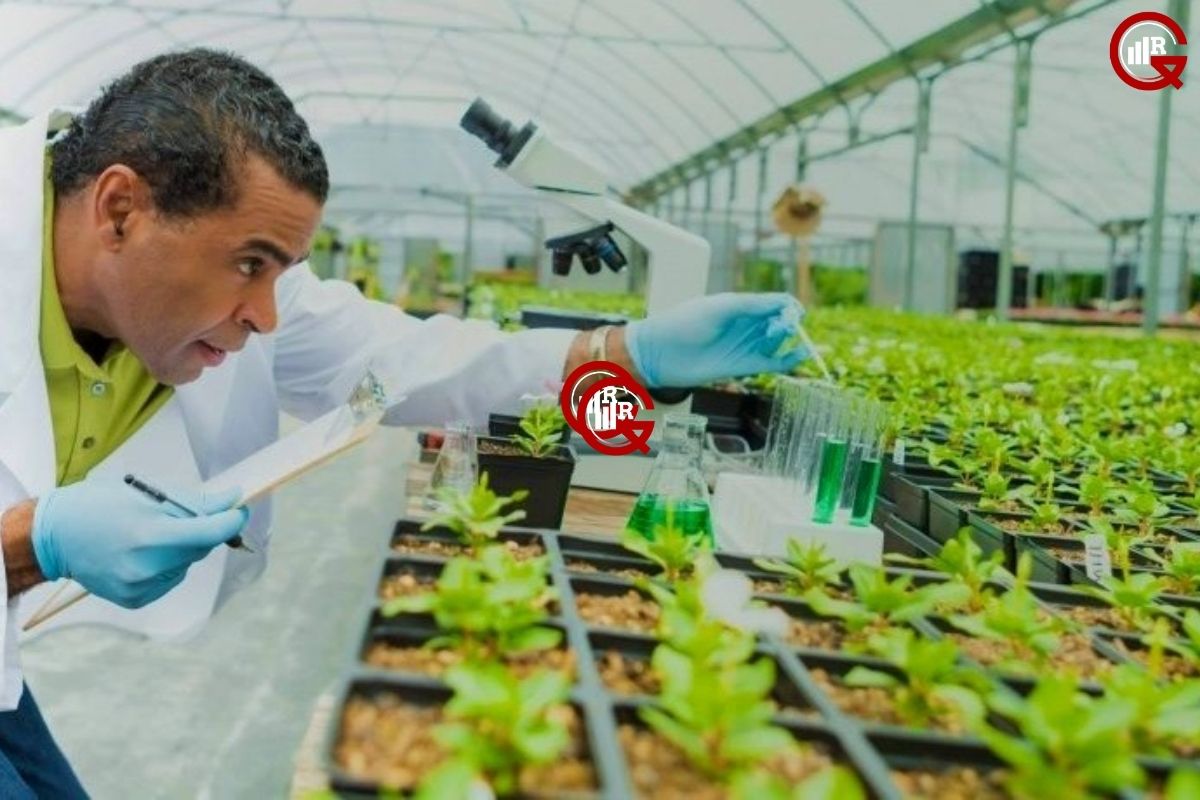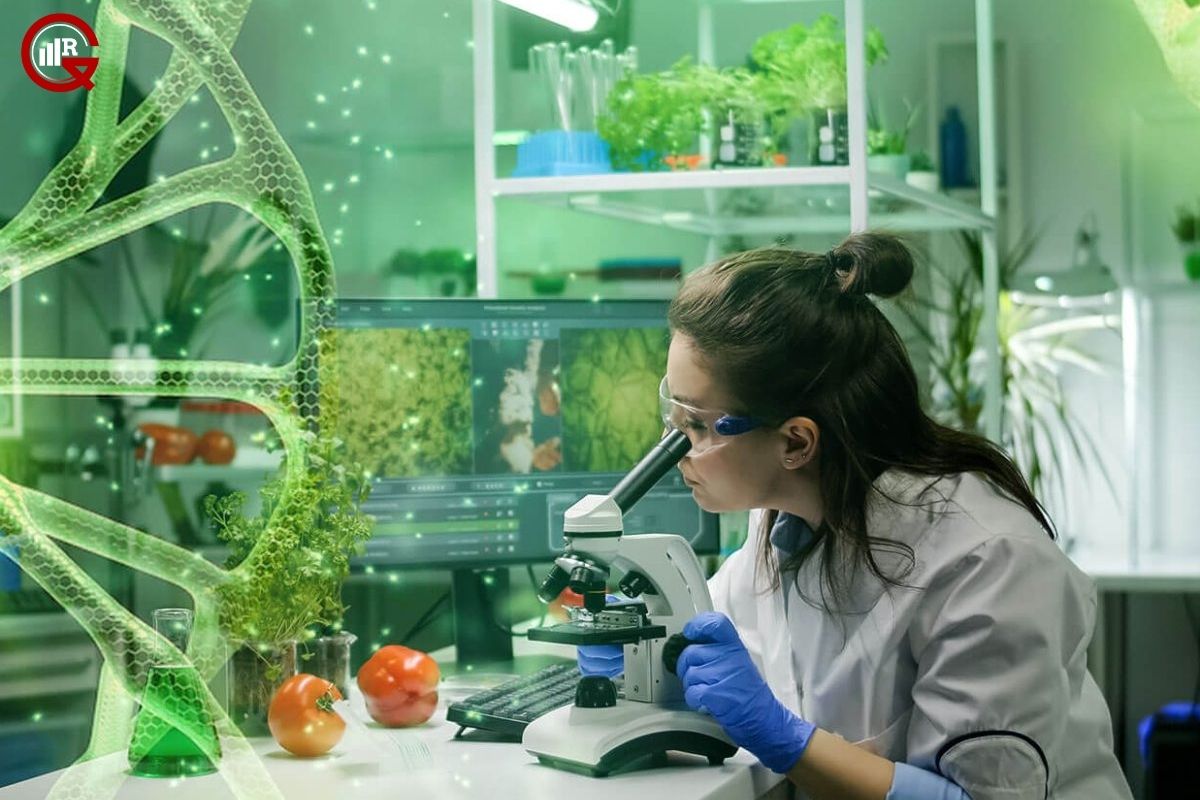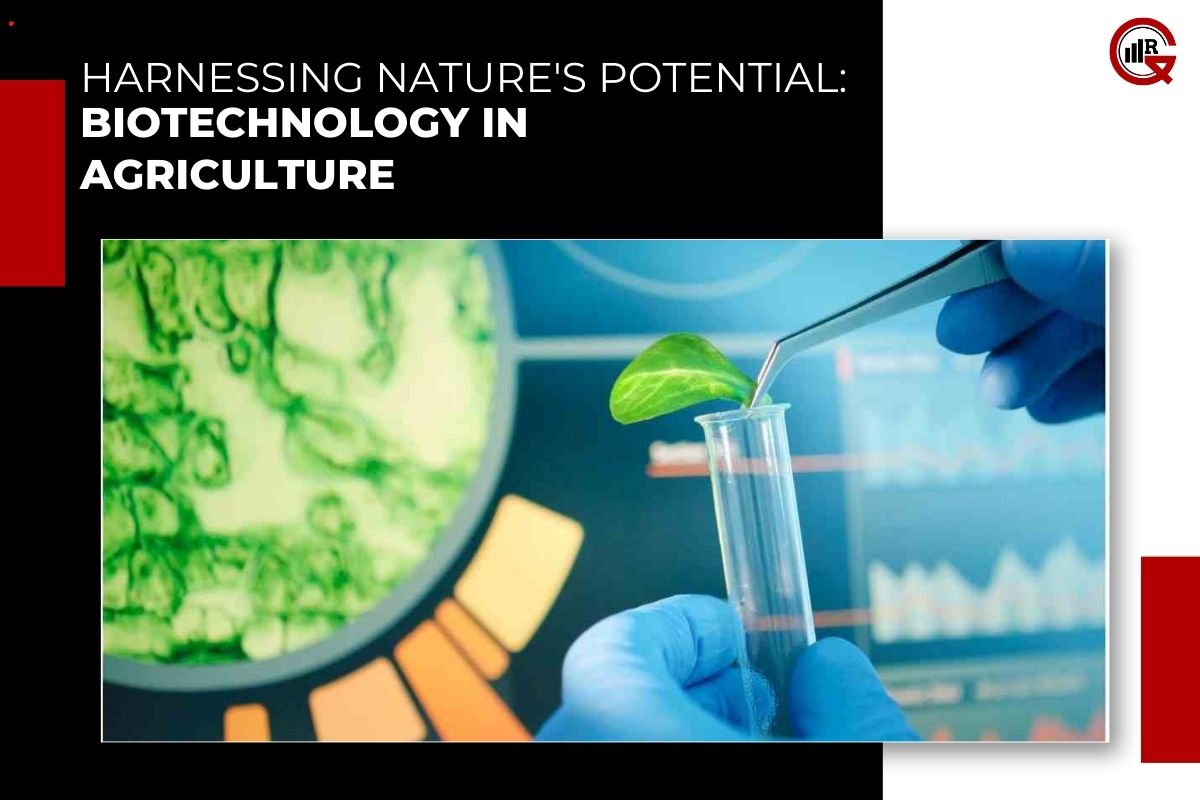(source – Kheti vyapara )
In the quest to feed a growing global population while minimizing environmental impact, biotechnology has emerged as a powerful tool for revolutionizing agriculture. By leveraging the principles of genetics, molecular biology, and bioinformatics, biotechnology offers innovative solutions to enhance crop productivity, improve resilience to environmental stressors, and mitigate the challenges of climate change. In this article, we explore the diverse applications of biotechnology in agriculture, from genetic engineering and crop breeding to precision farming and sustainable practices.
Understanding Biotechnology in Agriculture
Biotechnology in agriculture encompasses a wide range of techniques and methodologies aimed at harnessing the genetic potential of plants, animals, and microorganisms to improve agricultural productivity, sustainability, and resilience. Key areas of focus include:
Genetic Engineering: Genetic engineering involves the manipulation of an organism’s genetic material to introduce desirable traits or characteristics. In agriculture, genetic engineering techniques such as gene editing and transgenic technology are used to develop crops with enhanced traits such as pest resistance, herbicide tolerance, and improved nutritional content.
Crop Breeding: Traditional crop breeding methods rely on selective breeding and cross-pollination to develop new varieties with desirable traits. Biotechnological approaches such as marker-assisted selection (MAS) and genomic selection (GS) accelerate the breeding process by identifying and selecting plants with specific genetic markers associated with desired traits, such as disease resistance, drought tolerance, or high yield potential.
Precision Farming: Precision farming utilizes technology such as global positioning systems (GPS), remote sensing, and data analytics to optimize agricultural practices and resource management. By collecting and analyzing data on soil conditions, weather patterns, crop health, and yield variability, precision farming enables farmers to make informed decisions about planting, irrigation, fertilization, and pest management, maximizing efficiency and sustainability.
Applications of Biotechnology in Agriculture

Improved Crop Traits: Genetic engineering has enabled the development of crops with enhanced traits such as insect resistance, disease resistance, herbicide tolerance, and drought tolerance. For example, genetically modified (GM) crops such as Bt cotton and Bt maize produce proteins toxic to certain insect pests, reducing the need for chemical insecticides and minimizing crop damage.
Nutritional Enhancement: Biotechnology has the potential to improve the nutritional quality of crops by enhancing their nutrient content or bioavailability. For example, biofortification programs aim to increase the levels of essential nutrients such as vitamin A, iron, and zinc in staple crops like rice, wheat, and maize, addressing micronutrient deficiencies and improving public health outcomes in resource-limited regions.
Disease and Pest Management: Biotechnology offers novel approaches to disease and pest management in agriculture. RNA interference (RNAi) technology, for example, enables the development of crop plants that produce small RNA molecules targeting specific genes in pests or pathogens, suppressing their activity and reducing crop damage without the need for chemical pesticides.
Environmental Sustainability: Biotechnology contributes to environmental sustainability in agriculture by reducing the environmental footprint of farming practices. GM crops engineered for herbicide tolerance allow for the use of environmentally friendly herbicides with lower toxicity and reduced persistence in the environment. Additionally, precision farming techniques optimize resource use, minimize waste, and mitigate the impacts of agriculture on soil, water, and biodiversity.

Benefits of Biotechnology in Agriculture
Increased Crop Productivity: Biotechnology enhances crop productivity by improving yield potential, resilience to environmental stressors, and resistance to pests and diseases. By developing crops with higher yields and greater resilience to climate variability, biotechnology helps farmers meet the growing demand for food while reducing pressure on land and water resources.
Reduced Environmental Impact: Biotechnology in agriculture reduces the environmental impact of agriculture by minimizing the use of chemical inputs such as pesticides and fertilizers. By developing crops with built-in pest and disease resistance, biotechnology reduces the need for chemical treatments, minimizing pesticide residues in food, soil, and water.
Improved Food Security: Biotechnology plays a crucial role in enhancing food security by increasing the availability, accessibility, and affordability of nutritious food. By developing crops with enhanced nutritional content, extended shelf life, and resistance to environmental stressors, biotechnology helps ensure a stable and resilient food supply, particularly in regions vulnerable to food insecurity and climate change.
Sustainable Agriculture Practices: Biotechnology promotes sustainable agriculture practices by improving resource use efficiency, minimizing waste, and reducing the environmental footprint of farming operations. By optimizing inputs such as water, fertilizer, and energy, biotechnology in agriculture helps farmers achieve higher yields with fewer resources, enhancing the economic viability and environmental sustainability of agriculture.
Challenges and Considerations
Regulatory Frameworks: Biotechnology in agriculture is subject to stringent regulatory frameworks and oversight to ensure the safety, efficacy, and environmental sustainability of genetically modified organisms (GMOs) and biotechnologically derived products. Regulatory requirements vary by country and region, posing challenges for the development, testing, and commercialization of biotechnology products on a global scale.
Consumer Acceptance: Consumer acceptance of biotechnology varies depending on factors such as cultural norms, perceptions of risk, and trust in regulatory authorities. Public perception of GMOs and biotechnologically derived products may influence consumer purchasing decisions, market demand, and policy decisions, highlighting the importance of transparent communication, education, and engagement with stakeholders.
Ethical and Socioeconomic Implications: Biotechnology in agriculture raises ethical and socioeconomic considerations related to issues such as intellectual property rights, access to technology, and equity in agricultural development. Concerns about corporate control of seed patents, farmer livelihoods, and social justice in food systems underscore the need for ethical stewardship, equitable access to biotechnology, and inclusive decision-making processes.

Future Directions and Innovations
Gene Editing Technologies: Advances in gene editing technologies such as CRISPR-Cas9 offer precise, efficient, and versatile tools for genetic manipulation in agriculture. CRISPR-based gene editing enables targeted modifications to crop genomes, allowing for the precise introduction or removal of specific genes associated with desired traits, such as disease resistance, nutritional quality, or environmental resilience.
Synthetic Biology: Synthetic biology combines principles of engineering and biology to design and construct novel biological systems with specific functions or properties. In agriculture, synthetic biology approaches enable the development of crops with customized traits, such as enhanced photosynthetic efficiency, nitrogen fixation, or carbon sequestration, to address global challenges such as climate change and resource scarcity.
Microbial Biotechnology: Microbial biotechnology harnesses the metabolic capabilities of microorganisms to enhance soil fertility, plant health, and nutrient cycling in agricultural ecosystems. Microbial inoculants, biofertilizers, and biostimulants containing beneficial microbes such as rhizobia, mycorrhizae, and plant growth-promoting bacteria enhance crop productivity, reduce the need for chemical inputs, and improve soil health and resilience.
Conclusion
In conclusion, biotechnology in agriculture holds tremendous promise for transforming agriculture and addressing the complex challenges facing global food systems. By harnessing the power of genetics, molecular biology, and bioinformatics, biotechnology offers innovative solutions to enhance crop productivity, improve food security, and promote environmental sustainability. Despite challenges such as regulatory complexity, consumer acceptance, and ethical considerations, biotechnology in agriculture continues to drive innovation and progress in agriculture, shaping the future of food production and ensuring a sustainable and resilient food supply for generations to come.






